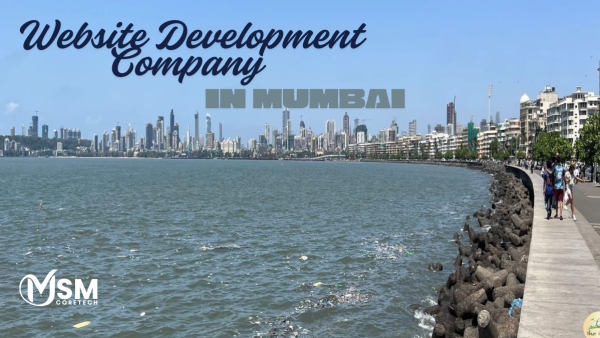In the past decade, India has witnessed a remarkable digital revolution. While online shopping was once limited to metro cities like Mumbai, Delhi, and Bengaluru, today, the e-commerce wave is rapidly sweeping across small towns and tier-2 and tier-3 cities. The convenience of doorstep delivery, improved internet connectivity, and rising digital literacy have transformed how people in smaller cities shop and do business.
What was once considered a luxury is now a necessity. From groceries and gadgets to apparel and home services, e-commerce services in small cities are experiencing record growth and businesses are taking notice.
Let’s explore why the demand for e-commerce is skyrocketing beyond urban boundaries and how it’s reshaping India’s retail landscape.
1. Internet Penetration and Smartphone Revolution
The biggest catalyst for this growth is the internet and smartphone boom. Affordable mobile devices and cost-effective data plans have made it easier for people in small towns to connect, explore, and shop online.
According to reports, over 65% of new internet users in India come from rural and semi-urban areas. With apps available in multiple regional languages, browsing and purchasing online has become simpler than ever.
Whether it’s ordering a t-shirt on Flipkart, groceries from BigBasket, or furniture from Amazon, customers in small cities are no longer behind in the digital race.
2. Changing Consumer Behavior
Gone are the days when people had to travel miles to nearby cities for branded products or specialized goods. Consumers in small towns now expect the same convenience and variety as metro users.
E-commerce platforms have made this possible by offering:
- Affordable pricing and discounts
- Multiple payment options, including cash on delivery and UPI
- Faster delivery times through local warehouses and logistics networks
As trust in online transactions grows, more first-time buyers from smaller towns are becoming loyal e-commerce customers. This shift marks a huge opportunity for online businesses.
3. Strengthened Logistics and Delivery Networks
Efficient logistics are the backbone of e-commerce. In the past, delivery to small towns was slow and expensive. But thanks to partnerships between e-commerce giants and local delivery startups, logistics have become faster and more reliable.
Companies like Delhivery, Ecom Express, and Shadowfax have expanded their reach to smaller regions, ensuring even remote locations can access timely delivery.
Additionally, the rise of hyperlocal delivery services has allowed local businesses and kirana stores to sell online and deliver within hours. This convenience has played a major role in boosting customer satisfaction and online buying confidence.
4. Digital Payment Adoption
The introduction of UPI (Unified Payments Interface) and digital wallets like PhonePe, Paytm, and Google Pay has revolutionized how people pay online.
Even in smaller towns, digital payments have become mainstream due to their ease and security. This change has made transactions smoother for both buyers and sellers.
Moreover, local entrepreneurs now find it easier to integrate digital payments into their e-commerce websites or apps, making online business operations more efficient.
5. Rise of Local Sellers and Regional E-Commerce Startups
One of the most exciting developments is the rise of local entrepreneurs entering the e-commerce space. Platforms like Meesho, IndiaMART, and JioMart empower small business owners and artisans from small cities to sell their products nationwide.
Whether it’s handloom sarees from Kolhapur, spices from Sangli, or handmade jewelry from Jaipur, local sellers are reaching new audiences through online channels.
The “Make in India” movement and digital support initiatives have further encouraged local businesses to explore online selling, contributing to the regional economy’s growth.
6. Affordable Technology and Easy Setup
Starting an e-commerce business is no longer complicated or expensive. With platforms like Shopify, Wix, and WordPress, even small businesses can set up a website within days.
Many digital marketing agencies and e-commerce service providers now operate in smaller cities, helping local businesses with website development, SEO, online ads, and social media marketing.
The growing availability of affordable digital marketing and e-commerce services has empowered regional entrepreneurs to compete with established brands, creating a thriving digital ecosystem outside metros.
7. Tier-2 and Tier-3 Cities: The New Growth Drivers
Small cities are not just catching up they’re becoming the main growth drivers for e-commerce in India.
Cities like Nashik, Nagpur, Surat, Coimbatore, and Jaipur are witnessing exponential online order growth. The residents are tech-savvy, aspirational, and willing to spend on quality products.
E-commerce companies are actively customizing their offerings for these regions by:
- Offering regional language support
- Using localized marketing campaigns
- Expanding warehouse and logistics hubs near these cities
This shift signifies a huge transformation in how India shops from a metro-focused market to an inclusive digital economy.
8. Influence of Social Media and Digital Marketing
Social media plays a vital role in driving e-commerce awareness and sales. Platforms like Instagram, Facebook, and YouTube have become major sources of product discovery, especially for younger audiences in small towns.
Local influencers and content creators are promoting products in regional languages, helping brands connect authentically with audiences outside metros.
As a result, e-commerce brands are investing more in localized digital marketing strategies to engage with these communities creating a deeper and more personal connection with consumers.
9. Government Initiatives Supporting Digital Commerce
The Indian government’s initiatives like Digital India, Startup India, and improved digital infrastructure have accelerated e-commerce adoption.
Public-private partnerships and investment in rural connectivity are helping even remote areas access online services. The goal is clear to make every Indian a part of the digital economy.
For small business owners, this means more opportunities to scale, trade online, and participate in the booming digital marketplace.
Conclusion
The rapid growth of e-commerce in small cities is reshaping India’s retail ecosystem. Improved internet access, smarter logistics, and changing consumer habits have created a new wave of opportunity for both buyers and sellers.
Small-town India is no longer just a consumer market it’s a hub of innovation, entrepreneurship, and digital transformation.
As technology becomes more accessible and digital trust increases, the future of e-commerce in India will be defined by these emerging cities. Businesses that recognize this potential and adapt early will lead the next big wave of online retail success.
Frequently Asked Questions (FAQs)
1. Why is e-commerce growing in small cities?
Affordable smartphones, internet access, and improved delivery services have made online shopping easier for small-town consumers.
2. How are local businesses benefiting from e-commerce?
Local sellers can now reach national audiences, sell products online, and compete with big brands using affordable e-commerce platforms.
3. Are people in small towns comfortable with online payments?
Yes. The widespread use of UPI and mobile wallets has made digital payments safe and convenient even in smaller regions.
4. Which sectors are seeing the most e-commerce growth in small cities?
Fashion, electronics, groceries, and personal care products are leading categories in regional e-commerce markets.
5. What is the future of e-commerce in small-town India?
With growing internet access and tech awareness, small cities will drive the next phase of e-commerce expansion across India.





Leave a comment